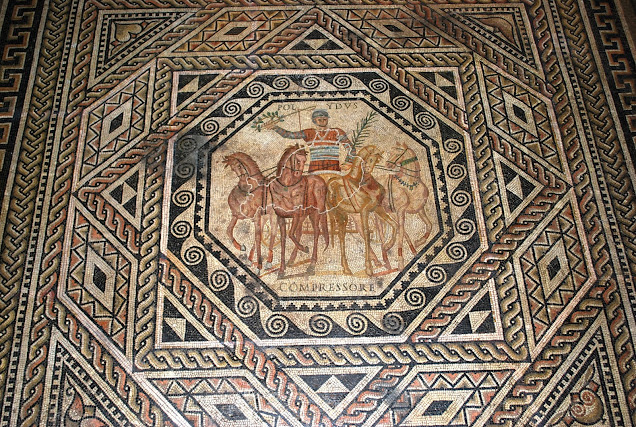A green grapevine: the amphitheater of Cumae
One of the best hidden ampitheaters of 'Campi Fregrei' or 'lands on fire', named after the once numerous vulcanic wells and activities, is the amphitheater of Cumae. We have been searching for it for almost two hours. Due to a incorrect signpost, but also because the entry is along a narrow, obscure road and the amphitheater is on private property, it almost escaped our hunt. The reward, once at the site, was worth while the effort. While still partly unexcavated, it gives you the impression you are one of the first visitors with many secrets still to be revealed.
Cumae (Italian; Italian: Cuma, Ancient Greek: Greek: Κύμη Kūmē, Κύμαι Kūmai or Κύ̂μα Kūma) is an ancient Greek settlement lying to the northwest of Naples. Cumae was the first Greek colony on the mainland of Italy (Magna Graecia), and the seat of the Cumaean Sibyl. It was the Cumaean alphabet, as used throughout the Greek island of Euboea, that was adopted in Italy, first by the Etruscans and later by the Romans, thus becoming the Latin alphabet, the world's most widely used phonemic script. More about Cumae, you can find here!
The amphitheater, found outside the city walls in the area of the Villa Vergiliana, a little building built by the German Archeological Society of Stuttgart, today the seat of the Archeological Superintendence, underneath which, the remains of a Roman temple have been identified. A symbol of Rome in Greek culture, the amphitheater was built around the beginning of the 1st century BC, as was the Pozzuoli (Puteoli) example, taking advantage of the natural slopes of Mount Grillo and filling the north side with an earth bank.
When you get through the entrance you can estimate the building to be about 90 metres long. It took some self-control not to start digging right away.
For more pictures of this intriguing amphitheater and other finds from Cumae, click here!
Cumae (Italian; Italian: Cuma, Ancient Greek: Greek: Κύμη Kūmē, Κύμαι Kūmai or Κύ̂μα Kūma) is an ancient Greek settlement lying to the northwest of Naples. Cumae was the first Greek colony on the mainland of Italy (Magna Graecia), and the seat of the Cumaean Sibyl. It was the Cumaean alphabet, as used throughout the Greek island of Euboea, that was adopted in Italy, first by the Etruscans and later by the Romans, thus becoming the Latin alphabet, the world's most widely used phonemic script. More about Cumae, you can find here!
For more pictures of this intriguing amphitheater and other finds from Cumae, click here!






Reacties
Een reactie posten